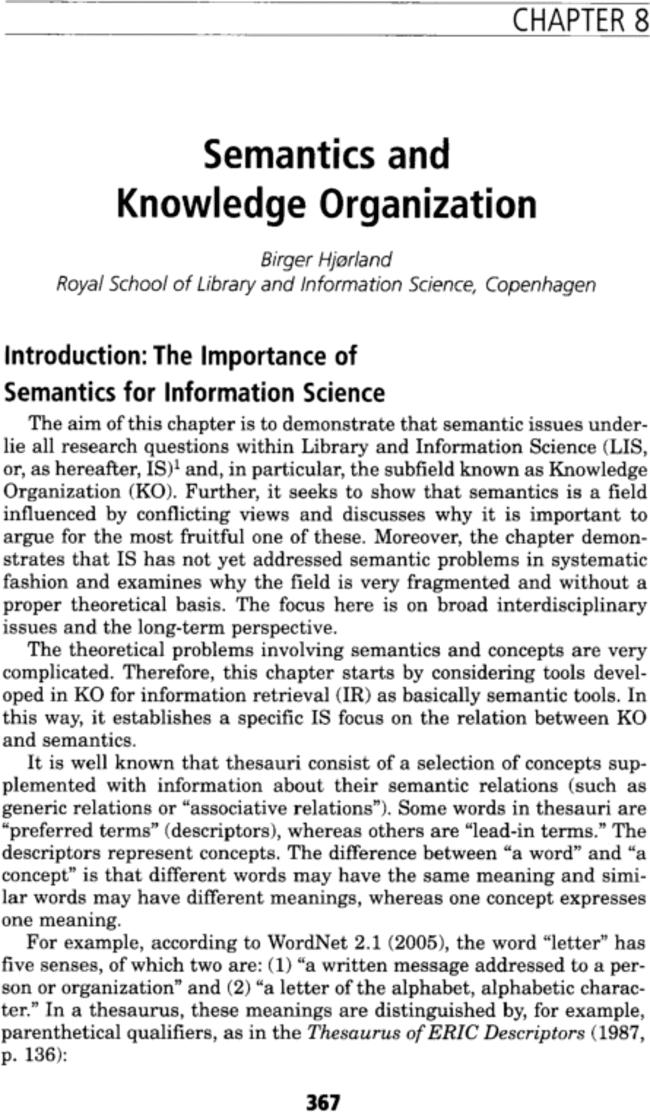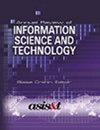Semantics and knowledge organization
Annual Review of Information Science and Technology
Pub Date : 2008-10-24
DOI:10.1002/aris.2007.1440410115
引用次数: 94
Abstract
Introduction: The Importance of Semantics for Information Science The aim of this chapter is to demonstrate that semantic issues underlie all research questions within Library and Information Science (LIS, or, as hereafter, 1S)l and, in particular, the subfield known as Knowledge Organization (KO). Further, it seeks to show that semantics is a field influenced by conflicting views and discusses why it is important to argue for the most fruitful one of these. Moreover, the chapter demonstrates that IS has not yet addressed semantic problems in systematic fashion and examines why the field is very fragmented and without a proper theoretical basis. The focus here is on broad interdisciplinary issues and the long-term perspective. The theoretical problems involving semantics and concepts are very complicated. Therefore, this chapter starts by considering tools developed in KO for information retrieval (IR) as basically semantic tools. In this way, it establishes a specific IS focus on the relation between KO and semantics. It is well known that thesauri consist of a selection of concepts supplemented with information about their semantic relations (such as generic relations or (‘associative relations”). Some words in thesauri are “preferred terms” (descriptors), whereas others are “lead-in terms.” The descriptors represent concepts. The difference between “a word” and “a concept” is that different words may have the same meaning and similar words may have different meanings, whereas one concept expresses one meaning. For example, according to WordNet 2.1 (20051, the word “letter” has five senses, of which two are: (1) “a written message addressed to a person or organization” and (2) ‘‘a letter of the alphabet, alphabetic character.” In a thesaurus, these meanings are distinguished by, for example, parenthetical qualifiers, as in the Thesaurus of ERIC Descriptors (1987, p. 136):

语义与知识组织
本文章由计算机程序翻译,如有差异,请以英文原文为准。
求助全文
约1分钟内获得全文
求助全文

 求助内容:
求助内容: 应助结果提醒方式:
应助结果提醒方式:


